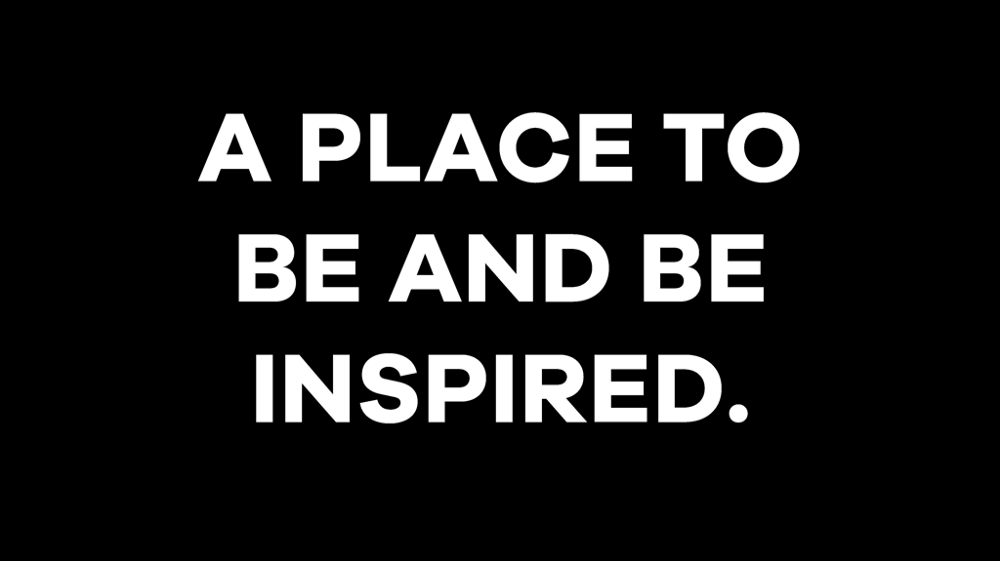Posted 20 Jul

Late last year I was frustrated. I knew what we were trying to create and I could describe it if I talked around it. But I wanted to articulate our essence in a way that would resonate quickly with a broad audience.
Finally we* worked it out.
A place to be and be inspired.
That’s it. A place where as a young adult you feel like you belong, and where it’s reasonable to meet friends, hang out after school on your way through the city or plan a visit for brunch on a weekend. A place where you can be inspired by the breadth of research that is shaping our understanding of the world and think about possible futures.
Where as a young adult you might be inspired to pursue a career in science and technology, or design or engineering. Or where you effortlessly embed a lifelong interest in learning and knowledge where creative ideas pop up in unexpected ways regardless of your career path.
Cognitive connections across apparently disconnected disciplines is where imagination is sparked and innovation happens. Our ability to do so is often shaped by our experiences as young adults.
For me it was fiction, choreography and engineering. My local newsagent sold a serial collection of great classic novels. As a 14 year old I read the Brontes, Dickens, Austen, Fitzgerald, Shelley and Poe. I skim-read Vanity Fair and hated Becky Sharp. I couldn’t get past the first few chapters of Pride and Prejudice because Mrs Bennett was so awful**. I wonder if my older self would have been as harsh. Fiction still immerses me in other perspectives and alternate realities.
I joined the school rhythmic gymnastics team. This led to years of competing, a long journey to wear a state tracksuit and a judging and a coaching career that helped pay my rent through university. It also affected the way I think about design. I look for contrasts of high and low, fast and slow, high energy and the punctuation of balance. I think about the way things link and how space is used.
Before choosing senior subjects, my friend’s father showed me his research set-up for modelling tidal flows, erosion and sea level change, a precursor to what I now know as a critical part of climate science. I chose to study processing engineering, and my brain was trained to think about how things flow and are transformed through systems, about how to optimise outcomes.
After studying engineering, including an industry-focused PhD, I worked fly-in fly-out in the mining industry as a metallurgist. I switched to human resources to be closer to the decision-making and then found myself working in strategy, product design and industry engagement in agriculture. Later I took on marketing responsibilities to encourage uptake of nanotechnology, and with that came a whole strand of new work in public education and science communication, on risks and opportunities. In trying to make sense of some seemingly random career choices, I completed a Masters of Management in Strategic Foresight and spent the most recent part of my career thinking about trajectories for emerging technologies, and facilitating others to engage in better future thinking.
It’s these concepts of storytelling, dynamics and foresight that I bring to the design of MOD. We will be Australia’s leading future-focussed museum, provoking new ideas at the intersection of science, art and innovation***.
I know young people are concerned with making the right choices for the future, but it’s often the parallel experiences that make our thinking unique. It’s the marrying of diverse ideas that give rise to innovation.
I want the experience of being involved in MOD. to be an engine for future serendipity, pulling together strands from science to cinema, from maths to music, from engineering to ecology to entrepreneurship. To have any experiences in formal learning challenged, enhanced and expanded by experiences elsewhere. To find places where we belong, and where we are inspired. Learning that equips us to build beautiful futures.
* With thanks to Nick Crowther, Amy Milhinch and Alicia Wakeling from Freerange Future as well as David Paterson and Emma Fey.
** The BBC series on the other hand was just fine.
*** Where all of these are plural and broadly inclusive — sciences, arts and the many processes of innovation.
If you’re interested in beautiful futures and want to join us for the ride, comment below, sign-up to our newsletters or email us at [email protected].
An earlier variation of this article was published in the Enterprise Magazine, University of South Australia, Issue 2, 2016.